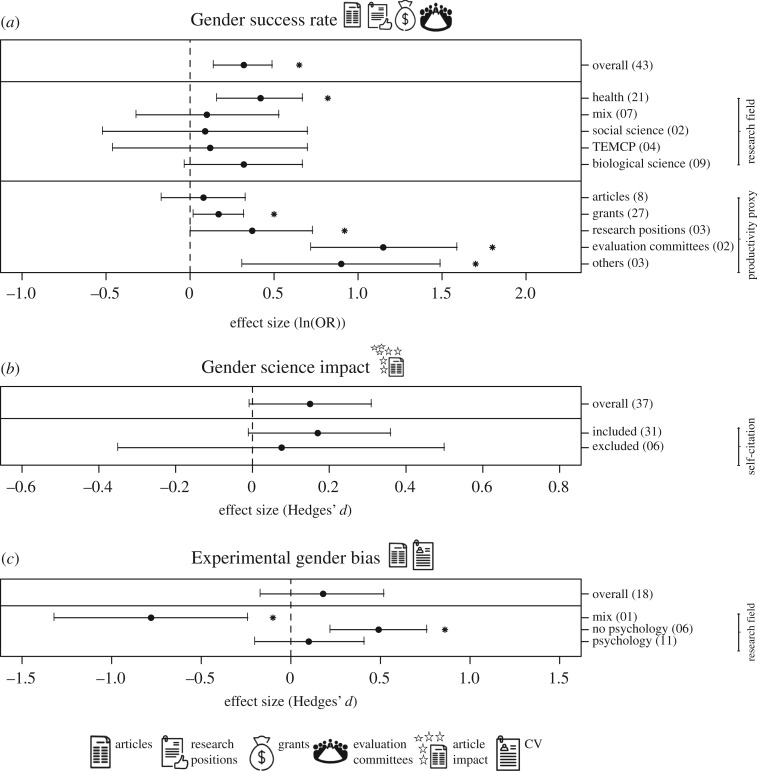Figure 3.
Factors that have been associated with the gender productivity gap in science. The mean effect size ± 95% confidence intervals of (a) gender success rate (p = 0.0004), (b) gender science impact (p = 0.063) and (c) experimental gender bias (p = 0.315). The number of observations included in each meta-analysis is reported within parentheses. The effect size of gender depending on the research field (p = 0.697) and the productivity proxy (p < 0.0001) are shown for success rate. The effect of self-citations on science impact is also shown (p = 0.73). The effect size of gender depending on the research field (Psychology or not, p = 0.0002) is shown for experimental gender bias. The vertical dashed line in each graphic indicates no difference between men and women scientists. Effect size values in the right side of each graphic indicate higher men productivity, whereas those in the left side indicate higher women productivity. Asterisks denote the mean effect sizes significantly different from zero (p < 0.05). Icons illustrate the type of primary response variables included in each meta-analysis.

